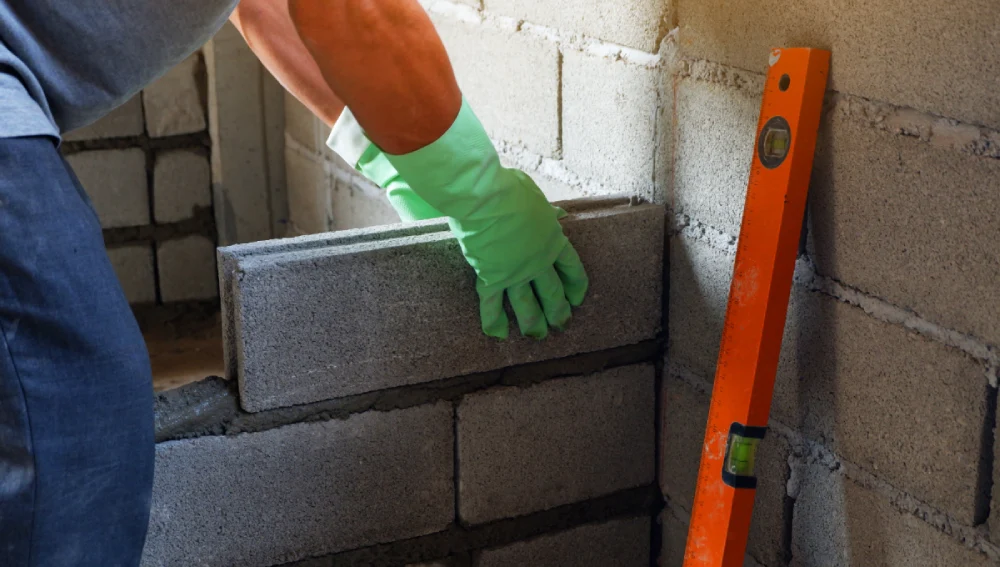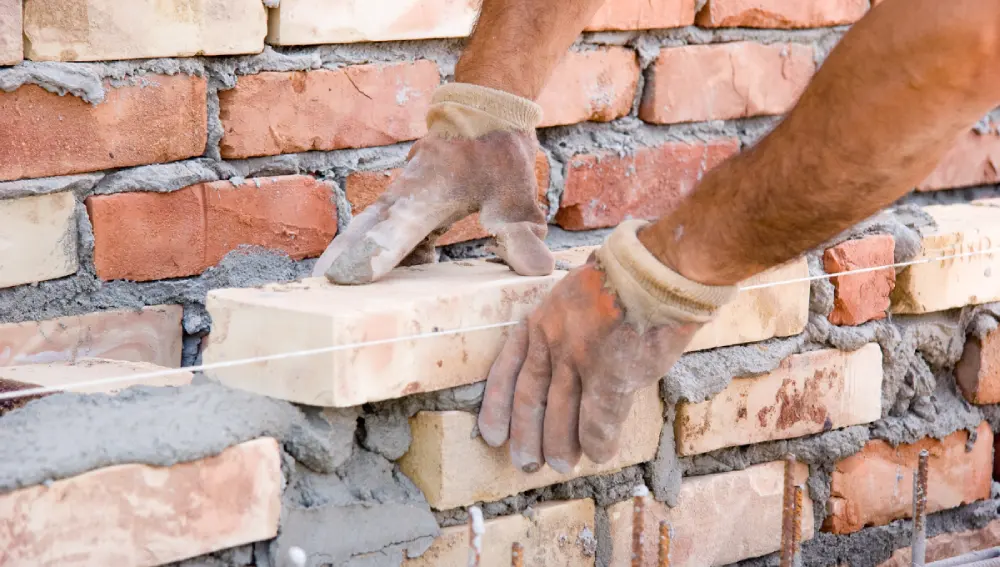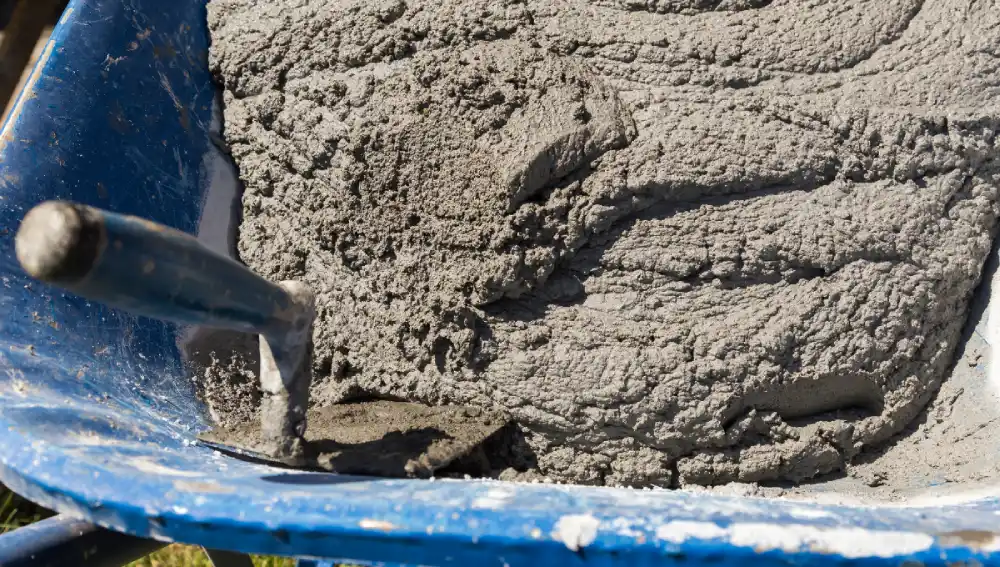Masonry cement is a significant material that is used for mortar in the construction of masonry. It’s properties, composition, and applications make them unique compared to other cement types. It is used in various applications making it indispensable in the construction industry. This blog will explore the details regarding composition, properties, and other information about masonry cement.
What is Masonry Cement?
Masonry cement is a type of cement designed for use in the construction of brick, block, and stone structures. It is mainly composed of Portland cement, which provides early strength, along with air-entraining agents that enhance plasticity and water retention. The formulation often includes hydrated lime or other inert fillers and additives, which contribute to the cement’s overall performance by increasing water retention, workability, and durability.
The primary function of masonry cement is to bond bricks, blocks, and stones together, ensuring both structural integrity and an aesthetically pleasing finish.

Composition of Masonry Cement
Masonry cement primarily consists of a blend of Portland or blended hydraulic cement, along with some plasticizing materials like limestone or hydraulic lime, and other additives. All the added materials help in improving the properties of masonry cement. To ensure the consistency of cement, all these materials are proportioned in the cement manufacturing plant.
Masonry cement is produced by incorporating a substantial quantity of either active or inert blended materials, along with slaked lime, into Portland cement. This type of cement is characterized by its enhanced workability and ability to retain water, although it haslower strength compared to other types.
Additionally, masonry cement can be created using active mixtures such as fly ash combined with lime or gypsum. The various grades of masonry cement available include 225, 275, and 325, and others.
Applicable Standards
Masonry cements adhere to ASTM C 91 standards, specifically designed for masonry applications. They are used to create ASTM C 270 mortars in types O, N, S, and M, meeting either property or proportion specifications. The sand used with masonry cement for these mortars must comply with ASTM C 144 standards.
Properties of masonry cement

Physical properties
ASTM-91 is the standard specification for masonry cement. There are 3 main types:type S, type N, and type M masonry cement, each have differentphysical properties according to ASTM C-91.
- Fineness: The fineness of the cement that is residue present on a 45 µm [No. 325] sieve, maximum of 35% is withthe range of 24 in all the S, N, and M types of masonry cement, and the autoclave expansion is 1.0 for all the 3 types.
- Setting Time: The initial setting time is 2 hours for Type N and 1.5 hours for Types S and M, while the final setting time is uniformly 24 hours across all types.
- Compressive Strength: The comprehensive strength of 7 days psi for N type is 500, S type is 1300, M type is 1800 and the comprehensive strength of 28 days psi for N type is 900, S type is 2100, M type is 2900.
- Air Content: The minimum volume of air content is 8% in all three types of cement and the maximum volume of air content is 21% in N type and 19% in S and M type.
- Water Retention: The water retention flow after the suction is 70% in all three types.
Other properties
Workability
Workability is the mortar’s ability to cling to head joints, smoothly slide off the trowel, and support masonry units. Good workability, maintained over time (known as board life), is essential for quality construction. Adding plasticizers in masonry cement improves workability, board life, and water retention.
Strength
Masonry cement simplifies batching and ensures consistent mortar strength, exceeding ASTM C 270 standards. High-strength types S and M are ideal for special applications like load-bearing and below-grade masonry. Bond strength, crucial for construction, is influenced by unit and mortar properties, ambient conditions, and workmanship. Most masonry cements achieve flexural bond strengths over 690 kPa (100 psi).
Durability
Durability factors include freeze-thaw resistance, drying shrinkage, sulfate attack resistance, water absorption, and soundness. Generally, masonry cement mortars excel in these areas, particularly in freeze-thaw resistance, due to controlled air content, outperforming non-air-entrained Portland cement-lime mortars.
Water Permeance
Water permeance in masonry depends on design and workmanship. Single wythe masonry is prone to water penetration, making proper joint filling, tooling, flashing installation, and cavity cleaning crucial. Masonry cement mortars’ excellent workability, strength, and durability ensure watertight construction, supported by extensive laboratory and field performance.
Masonry Cement Manufacturing Process
Due to its low strength, masonry cement is not suitable for use in reinforced or structural concrete. Instead, it finds applications in industrial and civil building masonry, plaster mortar, and cushion concrete, and others.
Depending on the requirements, the manufacturing process of masonry cement can vary. Here are three methods commonly used:
Masonry Cement Based on Fly Ash:
It is composed of 65% fly ash, 18% clinker, 11% lime, and 6% gypsum. These materials are combined and ground in a cement ball mill. This method uses fly ash to convert waste materials into a building material and helps in promoting environmental sustainability.
Composite Masonry Cement:
It is composed of 0 to 45% cement, 5 to 50% quicklime, 0 to 20% gypsum, 0 to 10% sodium sulfate, and 40 to 90% industrial waste residue.
Industrial waste residue and gypsum are dried and mixed according to a specific formula, then ground in a ball mill to achieve a fineness where 2 to 10% remains on a 4900-hole sieve.
Iron Tailings-Based Masonry Cement:
It is composed of iron tailings, high calcium coal ash, slag, sodium sulfate, early strength agents, fly ash, or coal cinder. This method involves mixing these materials, offering benefits like reduced investment, lower costs, and simpler technology.
The manufacturing process of masonry cement shares similarities with other types of cement, involving several key steps:
- Crushing
- Raw Materials Grinding
- Homogenization
- Clinker Production
- Cement Grinding
- Packing and Shipping
This structured process ensures that masonry cement meets the necessary standards for various construction applications, providing a reliable and cost-effective material for builders.
How to Apply Manstory Cement
Successful masonry cement application requires careful adherence to good workmanship principles, such as properly filling head and bed joints, careful placement of units, and appropriate joint tooling. Adjust construction procedures and schedules for extreme weather conditions and ensure proper cleaning.
Fresh mortar should be mixed as needed to prevent stiffening. If the mortar becomes stiff, restore workability by adding water and remixing, though avoid using mortar over 2.5 hours old. Minimize cleaning by practicing good workmanship, dry brushing after tooling, and removing mortar splatter promptly with nonmetallic tools. If cleaning solutions are necessary, ensure compatibility with masonry units.
Uses of Masonry Cement
Cement mortar is essential in construction for various applications:
- Cement mortar fills gaps between bricks and stones and provides a soft, even bed for brick and stone layers.
- It protects joints and surfaces in brick and stone masonry and fills pipe joints effectively.
- It can improve the appearance of a structure by hiding open joints and creating a uniform look.
- Cement mortar is suitable for seismic zones as it has adhesive properties.
Conclusion
Masonry cement is a crucial and adaptable material in the construction sector. Its properties, like improved workability, water retention capability, and durability, make it suitable for a wide range of masonry projects.
FAQs
ASTM standards for masonry cement is ASTM C 91.
1.5 hours.
Yes, it is suitable to be used in seismic zones as they have adhesive properties.
No, because of its lower strength, it is not suitable for structural concrete.

